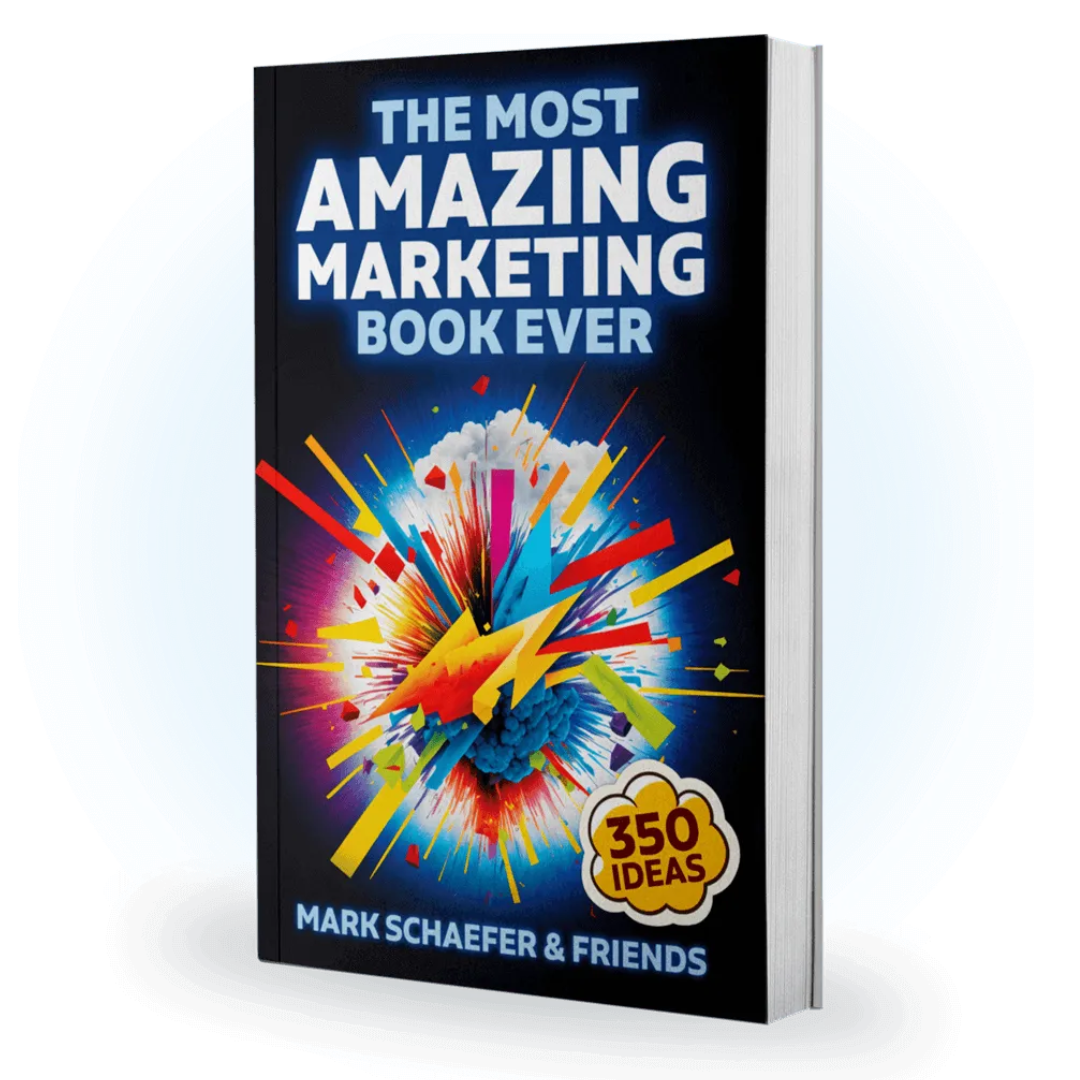The content curator's path to building an authority brand
Content curation as a vehicle for influence: How to build and sustain personal brand authority without having to constantly publish original ideas
When it comes to building personal brand authority, it’s common to assume you need to always be publishing original ideas - crafting bold opinions, staking contrarian positions, and ‘owning’ a distinctive point of view in the marketplace.
And it’s a fair assumption. That pathway works.
But it’s not the only way.
Some people build authority not by broadcasting what they know, but by sharing other people’s stories and ideas, and illuminating what matters.
They are discerning editors of ideas who surface, connect, and contextualise meaningful work.
Their authority comes from taste, insight, judgement and perspective.
This is the curator’s route.
Authority through discernment
In a noisy marketplace, the person who helps others make sense of the noise becomes invaluable.
Curation, done with passion and strategic intent, is a sophisticated act of authority building; it signals expertise, clarity, and generosity all at once.
A good curator doesn’t just share what’s interesting; they reveal why it matters.
They earn trust by filtering complexity through a clear, consistent lens.
Over time, that discernment becomes their reputation.
Who thrives in this lane
Curatorial authority often suits people who:
Are naturally curious and love exploring across disciplines.
Possess editorial instincts - they can spot what’s valuable and interesting, and what’s not.
Value quality over quantity, and preferring to help others understand over constant self-promotion.
Feel most comfortable elevating other people’s ideas rather than being the sole expert in the room.
If you find yourself constantly saying “You’ve got to read this” or “Here’s what these trends really mean,” you may already be walking the curatorial path!
Two types of curator
Broadly speaking, curators tend to fall into two categories (though some are genuine hybrids):
1. The Conversational Curator (the interviewer or host)
Think of the podcast or YouTube interviewer who brings others’ expertise into the spotlight by guiding the dialogue with insight and context, providing a more cohesive narrative for the listener/viewer.
These curators build authority by hosting ideas in public.
Their craft is conversation: curating the right guests and themes, asking insightful questions, drawing connections between discussions, and framing each conversation through their unique lens.
Author Tim Ferriss (The Tim Ferriss Show) is a great example of this. He curates top-tier guests carefully, focusing on those who have achieved notable success or unique insight. His show distills broad wisdom from his guests’ lives and methods, giving listeners actionable lessons and fresh perspectives.
Ferriss’s books Tribe of Mentors and Tools of Titans are also curated works. These books compile distilled insights, tactics, routines, and habits drawn from hundreds of interviews Ferriss has conducted with high achievers across various fields.
Other examples of conversational curators include:
Krista Tippett (On Being)
Chris Williamson (Modern Wisdom Podcast)
Lewis Howes (The School of Greatness 👇 )
A less known industry-specific example of a Conversational Curator is Daniel Stillman, host of The Conversation Factory podcast. He curates meaningful discussions about how to design and facilitate effective conversations that lead to innovation, change, and better collaboration in organisations and communities.
The Conversational Curator’s skill? Creating coherence across many voices.
Their reward? Becoming a trusted conduit of ideas, and genuine authorities in their own right.
2. The Editorial Curator (the synthesiser or sense-maker)
This type builds authority through written or visual curation - distilling themes, connecting sources, and layering commentary that helps people think better, with more clarity.
Editorial curators show up in different flavours.
For example, Polina Pompliano👇 (The Profile) profiles successful individuals to extract career and life lessons; additionally, she curates lists of recommended podcasts, videos, interviews, and deep dives (the ‘Profile Dossier’) for subscribers.
Polina is a curator of people and principles. Her medium is narrative synthesis (versus aggregation), and her authority flows from editorial discernment, not constant self-expression.
[ READ THIS SUBSTACK INTERVIEW WITH POLINA ]
Meanwhile, Chenell Basilio (Growth in Reverse) is a research-driven curator who reverse-engineers how top creators grow their audiences and businesses.
Each deep-dive she publishes is a masterclass in analytical curation - collecting, connecting, and contextualising insights from multiple sources into a clear growth narrative. Her authority comes from rigour, pattern recognition, and a generosity of detail rarely seen in creator-economy coverage.
Some other examples of editorial curators:
Jeremy Caplan (Wonder Tools) selects, tests, and shares the most useful digital tools, websites, and apps for productivity and creativity, providing his audience with independent, concise explanations and use-case examples.
Through Farnam Street, Shane Parrish has created one of the internet’s most trusted hubs for curated wisdom, a place where big ideas meet practical thinking. By distilling insights from disciplines such as decision-making, behavioural finance, philosophy, and strategy, he helps readers sharpen their judgment and make better choices in work and life.
Christophe Abiragi, publisher of Daily PR Brief (Substack), shares links to interesting and relevant PR and communications articles every business day. This type of curated publication can be a powerful way to become a go-to resource for time-poor professionals in a specific industry.
Austin Kleon (author, Show Your Work) practices curation as a fundamental part of his creative output, and he teaches others to do the same by thoughtfully selecting, sharing, and interpreting the work and ideas that influence them; check out his ‘Typewriter Interviews’ on Substack.
The Editorial Curator’s skill? Joining dots across disciplines or deep-diving into patterns within a domain.
Their reward? Becoming a valued source of clarity and perspective, and building an appreciative audience in the process.
Both curator types are trusted not for being first, but for being right, and for helping others see what’s worth their time.
In a noisy, information-overloaded world, a good curator is worth their weight in gold!
One-off curated projects
The content curation examples listed above are essentially ongoing media properties - podcasts and newsletters that are published on a regular basis, often weekly.
But curation can also be incorporated into one-off content projects to great effect, whether they be books (see below), standalone long-form blog or newsletter articles (aka ‘round-ups’), reports, or events.
Here are a couple of examples --
Mark Schaefer - The Most Amazing Marketing Book Ever - “What happens when futurist Mark Schaefer assembles 35 of his smartest marketing friends from around the world (with more than 750 years of accumulated experience!) and asks for their best marketing ideas? Well, it’s something amazing. In fact, it’s The Most Amazing Marketing Book Ever!”
Darren Woolley and his consulting company TrinityP3 are exemplars of how curated, multi-author industry books can surface deeper insights and foster community learning, much like other anthology projects popular in marketing and business.
Top 50 Marketing Management Posts (2013–2018) was an annual series that gathered the most impactful articles written by TrinityP3 team members and guest contributors across the year.
Conversations on Managing Marketing and Conversations on Managing Media are collaborative books that compile in-depth interviews and discussions with recognised experts offering perspectives on everything from data transformation and creativity to media agency strategies and ad fraud. These volumes were curated from podcast conversations and expanded into book format to showcase a diversity of insights from real-world marketing and media leaders.
What makes curatorial authority powerful
It scales trust. When people rely on you to point them toward what matters, you become their go-to source.
It demonstrates expertise indirectly. Your choices reveal your judgement and depth of knowledge.
It builds over time. The more consistently you curate through a distinct lens, the stronger your authority becomes.
It shows generosity. You’re not hoarding knowledge; you’re sharing other people’s stories, insights and ideas.
The deeper shift
In the emerging wisdom economy, discernment is a valuable currency. Attention-seeking is everywhere, but interpretation is rare.
To be effective, building authority by publishing original content and consistently sharing your ideas and expertise requires a degree of self-promotion. You need to put yourself (and your ideas and insights) out there into the world, in your voice.
Which is fine, but some people find this process a bit uncomfortable.
If that’s you - if being in the spotlight all the time doesn’t feel right - then maybe the curator’s path is something to consider.
So, before you assume the only way to become visible is to produce endless original content, ask yourself:
Could my authority grow faster by becoming the person who edits, elevates, and connects the ideas that matter most?
Food for thought!
TY
In case we haven’t met yet …
Hi, I’m Trevor. I’m a battle-hardened PR, content and digital communications strategist, guide and thought partner, specialising in authority branding . I help proven founders, leaders and experts become credible, influential voices in their industry.
If you think we might be a good fit, let’s get together for a chat! CLICK HERE TO BOOK A NO-OBLIGATION 20-MINUTE ZOOM CALL







